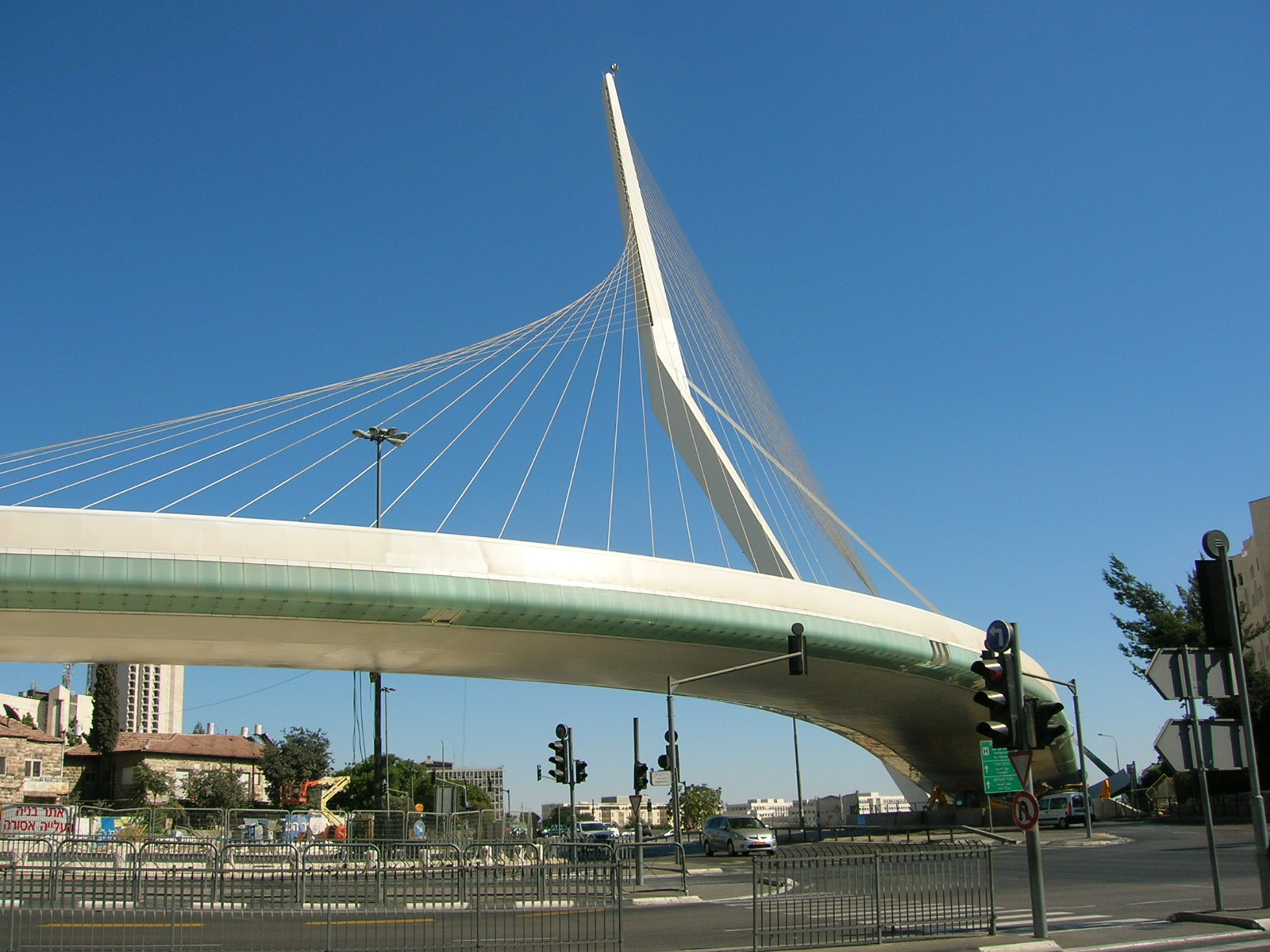The Chords Bridge (Bridge of Strings)
(June 25, 2008)

The Chords Bridge (Hebrew: גשר המיתרים, Gesher HaMeitarim), also called the Bridge of Strings or Jerusalem Light Rail Bridge, is a side-spar cable-stayed bridge at the western entrance to Jerusalem that was inaugurated on June 25, 2008. The 469-foot-long (140m) structure was designed by the Spanish architect and engineer Santiago Calatrava and is used by Jerusalem Light Rail’s Red Line, which began service on August 19, 2011. Incorporated in the bridge is a glass-sided pedestrian bridge enabling pedestrians to cross from Kiryat Moshe to the Jerusalem Central Bus Station.
A striking feature of the bridge is a nearly 387-foot (118-meter) high mast supporting the roadway via 66 steel cables arranged in a parabolic shape which develops three-dimensionally in space. At the time of its completion, it was the tallest structure in Jerusalem. The exterior of the bridge is mostly clad in Jerusalem stone, with steel, glass, and concrete detailing.
The form of the bridge resembles a tent in the desert or a harp, with the cables as the strings, symbolizing King David’s harp, according to some observers, others interpret the looming pylon as the bust of a long-necked bird, a human arm or an arrow caught in a bow.
“With historic landmarks such as the Western Wall and the Dome of the Rock, Jerusalem is hardly lacking in iconic architecture,” David Kaufman wrote in Time after its completion. “But the city’s latest aesthetic marvel — the Chords Bridge — is certainly the most impressive to debut in more than a millennium.” It is, Kaufman said, “Jerusalem’s first shrine of modern design.”
Meant to be an iconic landmark, the bridge was controversial because of its high cost. Originally budgeted for about $30 million in today’s dollars, its actual cost ballooned to about $65 million. Today, it is a tourist attraction.
Sources: David Kaufman, “Striking Chords in Jerusalem,” Time, (October 13, 2008).
“Chords Bridge,” Wikipedia.
Photo: Chord Bridge Little Savage, Public domain via Wikimedia Commons.


